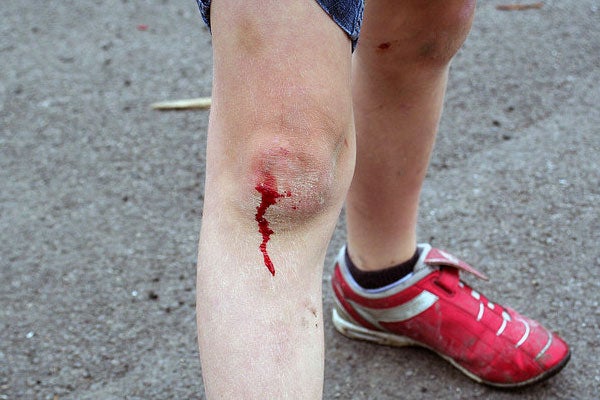
Understanding how wounds heal, helping those with chronic wounds heal faster
Published: July 15, 2014
You fall and scrape your knee. After cleaning the wound, you plaster a bandage over it and presto! In two to three days, your injury is nothing but a memory.
But what really just happened – how did your wound actually heal?
Using a student-designed software program called MEDUSA, a special type of microscope and a tool called fluorescent tagging, a group of researchers from the University of Toronto’s Institute of Biomaterials & Biomedical Engineering (IBBME) has been studying just that.
And they think they’ve uncovered how some of the fastest wound healers around – the embryos of fruit flies – get the job done, with the hope of translating some of these findings into medical therapies.
In a typical embryonic wound, a cable-like, cellular structure slowly draws in on itself, eventually closing off the wound in much the same way that a string bag closes. Second-year PhD candidate Teresa Zulueta-Coarasa, the first author in a study published in the journal Development, examined this behaviour in “normal’ and “mutant” fruit fly embryos. The goal: to measure how quickly wounds heal over time and what mechanisms lie behind healing.
It’s an incredibly laborious process. To determine the rate of healing in a single embryo, researchers measure the wound area on each and every frame of a film captured by confocal microscopy. Typically, this involves drawing a polygon shape on the borders of the wound onto hundreds of film images.
To speed the process of discovery, Zulueta-Coarasa developed the MEDUSA software program. The program employs algorithms to automatically find the borders of the wound in a single time frame of film. The resulting contour is then transferred onto the adjacent time frames and fitted to the individual images, making the analysis process for these large amounts of data far more efficient.
 To sleuth out the mechanisms behind healing, the team employed fluorescently-tagged proteins. Molecules that tended to gather around the wound edges increased in intensity, allowing the researchers to identify specific molecules involved in the healing process. (See MEDUSA image at right.)
To sleuth out the mechanisms behind healing, the team employed fluorescently-tagged proteins. Molecules that tended to gather around the wound edges increased in intensity, allowing the researchers to identify specific molecules involved in the healing process. (See MEDUSA image at right.)
“We found that for certain proteins, the intensity of the molecule in the wound margin increased rapidly, [suggesting that] those molecules are important to the wound healing process,” said Zulueta-Coarasa.
The findings may one day play an important role for those suffering from diabetes or other circulation-related illnesses.
“Patients with chronic wounds heal really slowly or not at all,” explained Zulueta-Coarasa, “but if we could understand why wounds heal so fast in these [fly] embryos we could develop a strategy to heal them.”
But what surprised the researchers is that the study may have uncovered a parallel between wound healing and the metastasis of certain cancers.
One of the proteins the researchers saw double in intensity around the wound is called Abelson kinase, or Abl. According to Zulueta-Coarasa, “We have been able to discover that, in mutant embryos without that molecule, wounds still heal – but at a much slower rate.”
Abl, though, is a molecule more commonly associated with metastatic cancers.
“From a biomedical perspective,” explained IBBME Assistant Professor Rodrigo Fernandez-Gonzalez, corresponding author on the paper, “the identification of a role for the protein Abl in coordinated cell migration [during wound healing] generates new hypotheses about its role in metastasis.”
“Abl activation is associated with invasive breast cancer, in which small groups of cells can coordinate their migratory behaviours to spread disease,” he added.
Though intriguing, the connection between the molecule’s role in speeding up the healing process and spreading cancer remains a mystery. “The actual mechanisms by which Abl promotes metastasis are unclear,” said Fernandez-Gonzalez.
For now, the team just hopes to identify the science behind the healing process, one tiny nick at a time.
Erin Vollick is a writer with IBBME at the University of Toronto.



